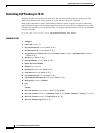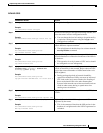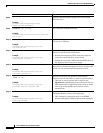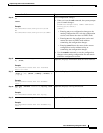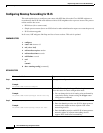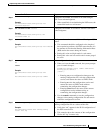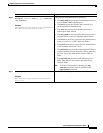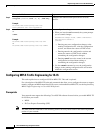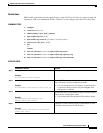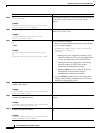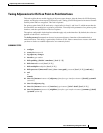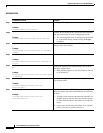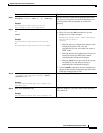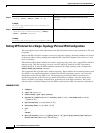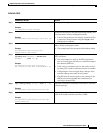
Implementing IS-IS on Cisco IOS XR Software
How to Implement IS-IS on Cisco IOS XR Software
RC-110
Cisco IOS XR Routing Configuration Guide
Configuring MPLS Traffic Engineering for IS-IS
This task explains how to configure IS-IS for MPLS TE. This task is optional.
For a description of the MPLS TE tasks and commands that allow you to configure the router to support
tunnels, configure an MPLS tunnel that IS-IS can use, and troubleshoot MPLS TE, see the Implementing
MPLS Traffic Engineering on Cisco IOS XR Software.
Prerequisite
Your network must support the following Cisco IOS XR software features before you enable MPLS TE
for IS-IS on your router:
• MPLS
• IP Cisco Express Forwarding (CEF)
Note You must enter the commands in the following task list on every IS-IS router in the traffic-engineered
portion of your network.
Step 5
hello-password {hmac-md5 | text} {clear |
encrypted}
password
[level {1 | 2}] [send-only]
Example:
RP/0/RP0/CPU1:router(config-isis-if)#
hello-password text clear mypassword
Configures the authentication password for an IS-IS
interface.
Step 6
end
or
commit
Example:
RP/0/RP0/CPU0:router(config-isis-if)# end
or
RP/0/RP0/CPU0:router(config-isis-if)# commit
Saves configuration changes.
• When you issue the end command, the system prompts
you to commit changes:
Uncommitted changes found, commit them before
exiting(yes/no/cancel)?
[cancel]:
–
Entering yes saves configuration changes to the
running configuration file, exits the configuration
session, and returns the router to EXEC mode.
–
Entering no exits the configuration session and
returns the router to EXEC mode without
committing the configuration changes.
–
Entering cancel leaves the router in the current
configuration session without exiting or
committing the configuration changes.
• Use the commit command to save the configuration
changes to the running configuration file and remain
within the configuration session.
Command or Action Purpose



